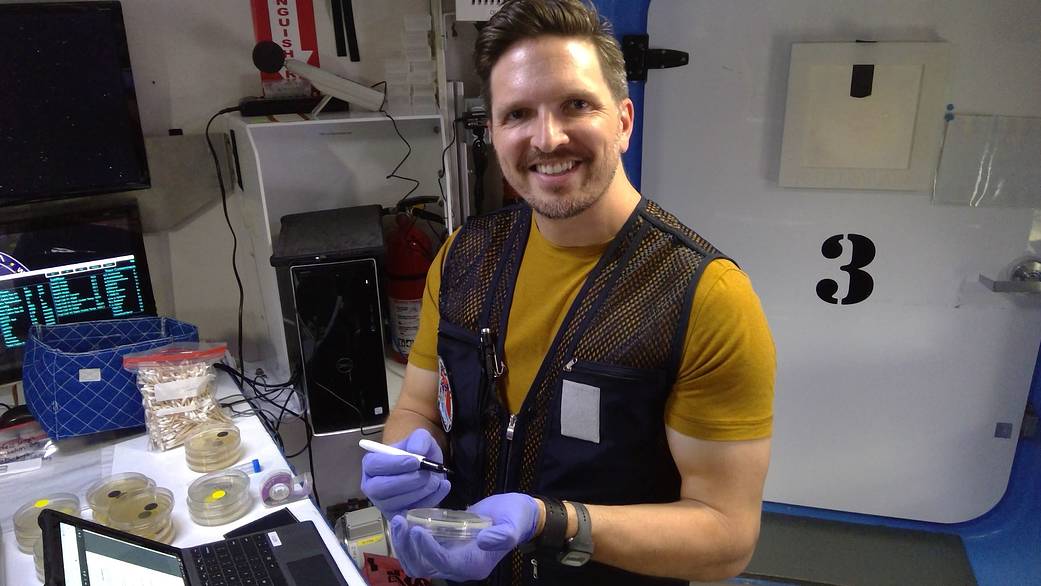Inside the Human Exploration Research Analog, or HERA, crew member Christopher Roberts marks a petri dish for storing swabs of microbes.
Similar to astronauts on the International Space Station, Roberts and fellow crew members swab surfaces around HERA as part of tasks during their 45-day simulated mission to deep space. They then wait a few days to analyze how microbes, such as spores, grow in the petri dishes. The scientific focus of this task isn’t on the microbes grown – instead, NASA scientists observe HERA crew to see how such routine science tasks, in combination with isolation and tight quarters, influence crew performance and behavior.
Credit: NASA
____
NASA’s Human Research Program, or HRP, pursues the best methods and technologies to support safe, productive human space travel. Through science conducted in laboratories, ground-based analogs, and the International Space Station, HRP scrutinizes how spaceflight affects human bodies and behaviors. Such research drives HRP’s quest to innovate ways that keep astronauts healthy and mission-ready as space travel expands to the Moon, Mars, and beyond.
Nathan Cranford
Jennifer TurnerNASA Human Research Program Strategic Communications

























